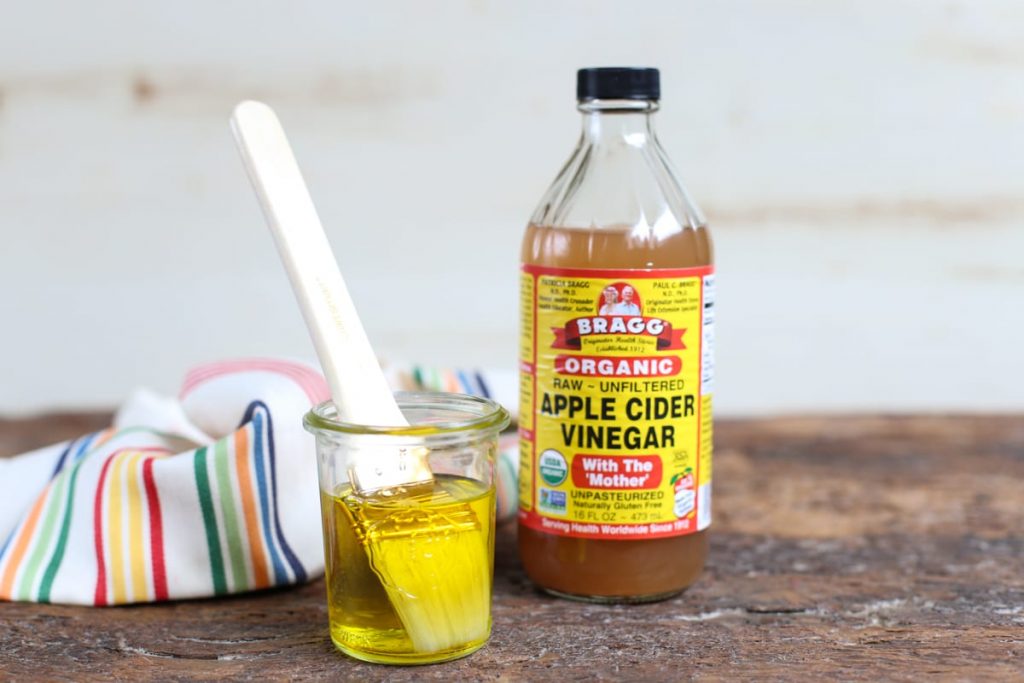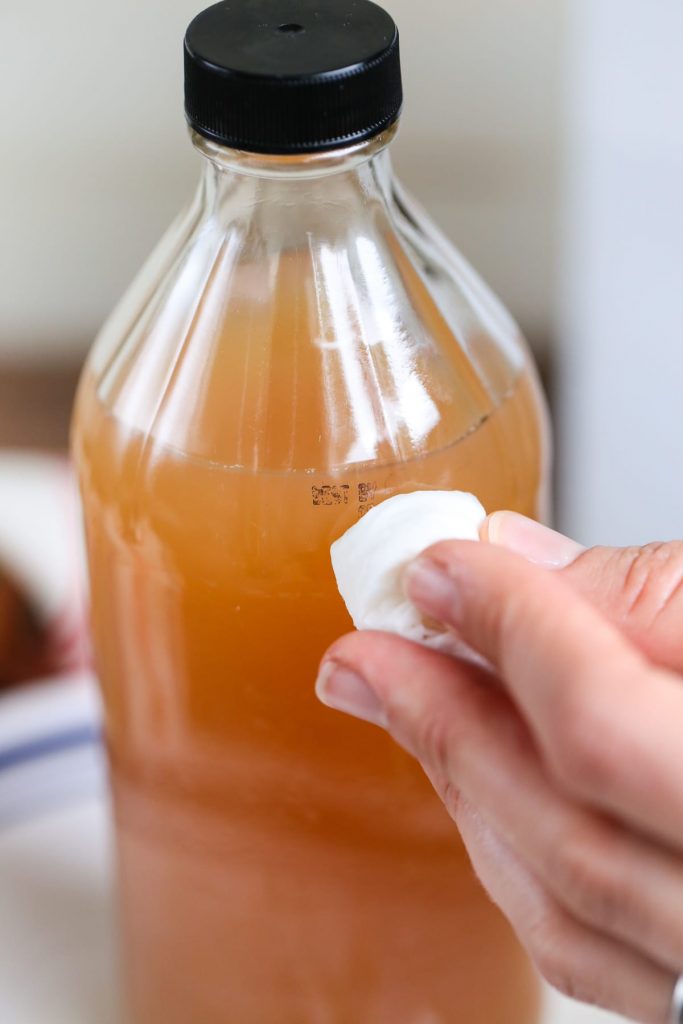
Want to Save This Article?
Enter your email & I’ll send it straight to your inbox. And you’ll get new recipes & tips each week.
Contributor post written by Kimberly from Turning It Home
A Note From Kristin: A huge thank you to Kimberly for sharing a practical DIY today! We are in the final stretch of the Live Simply Kitchen Remodel (you can follow the progress on Instagram), so I’m taking a break from sharing my stories/recipes for a few days to focus on this major project.
I’m regularly asked where I find the containers and spray bottles for my DIY recipes. I source my containers from various stores: HomeGoods, Target, Pier 1 Imports, and Amazon. Using glass for DIY recipes is important when you plan to store cleaners and beauty products that contain essential oils for long-term use.
For homemade cleaners, I love the Sally’s Glass Spray Bottles on Amazon or I make my own! Making your own glass spray bottles is super easy (just a vinegar bottle!) and costs just pennies. I learned how to make my own spray bottles from Kimberly, so I asked her to share this simple DIY technique on the blog. I know you’ll love these glass bottles for storing homemade cleaners.
I love cleaning with glass spray bottles but prefer not to think about the price tag that comes along with them. Thankfully, making your own (and consequently saving a lot of loot!) is super easy.
You’ll start with a glass vinegar bottle and a spray bottle nozzle. Most standard spray bottle nozzles will fit the glass bottle. I found my spray bottle nozzle in the One Spot at Target last year. Another time, I purchased a cheap multipurpose cleaner bottle at the dollar store for the sole purpose of using the nozzle. That worked just as well.
The toughest part of this whole process is removing the pesky sticker residue from the vinegar bottle. My secret weapon for removing all the gunk is olive oil. Just smear it on the bottle, allow it to sit for a few minutes, and wipe it off. I used to have half-hour battles with sticker residue before discovering this olive oil trick. It’s a life saver.
Once the sticker and glue residue are removed, simply remove the date stamp on the bottle with alcohol and a cotton ball…Voila, a homemade spray bottle!
Now it’s time to think about how to fill your bottle. There are many options: Homemade Bathroom Cleaner, Homemade All-Purpose Spray, Disinfecting Spray, Glass and Stainless Steel Cleaner, Stain Remover Spray (use a dark red wine vinegar bottle to store this recipe, like the Eden brand bottle), Herb-Infused Cleaner, Makeup Brush Cleaner (use as a spray), Bug Spray Repellent, or a Citrus Air Freshener. The options are limitless once you have a glass cleaning bottle in your hands.
Now that you know how to make your own glass spray bottles, how many will you stock up on?

How to Make a Glass Spray Bottle for Homemade Cleaners
Ingredients
- 1 glass vinegar bottle
- 1/2 cup extra virgin olive oil to remove the sticky residue
- 1 tsp rubbing/isopropyl alcohol to remove the date stamp
- 1 spray bottle nozzle from an old plastic cleaning bottle
Instructions
- To start, empty the vinegar (I store my vinegar in a sealed mason jar so I can use the bottle for cleaning) from the bottle and peel off as much of the label as you can.
- Apply olive oil to the adhered sticker residue that is left on the bottle. After a few minutes, rub off any remaining residue. I used my fingernail for this, but you can use a paper towel or a spoon.
- If there is any stubborn stickiness leftover, repeat the process.
- To remove the date stamp on the bottle, simply wipe it off using rubbing alcohol on a cotton ball.
- Wash the bottle with water to remove any remaining olive oil.
- Finally, fill the bottle with your favorite cleaner, attach the spray nozzle, and enjoy!
More DIYs You May Like:
DIY Herb-Infused All-Purpose Cleaner
7 Money-Saving Recipes Using Castile Soap










What would you suggest for a smaller jar, like a salsa jar. I hate throwing these in the recyle bin if can use them in some way. You idea is great for larger bottles that have an opening about the size of another plastic spray bottle, but any ideas for smaller jars?
Hey Sarah, I use those jars for food storage containers–making homemade salad dressing, storing dips, storing fresh herbs, or even a scrub cleaner.
I have been saving 16 oz vinegar bottles for sprayers. I have no trouble finding spray nozzles to fit but I would love to have silicone sleeves for them. Glass is so slippery when wet and I refuse to use glass in the bathroom.
That’s a great idea. Maybe amazon sells silicone sleeves?
LS Team
Some other options for bottle/spray-head combinations would be helpful. I would prefer to use the empty glass bottles (e.g., soda bottles) I already have, especially now that most recycling centers aren’t accepting glass anymore; and finding a spray pump with the right diameter/threading for a given bottle can be tricky. It looks like you lucked out with a bottle type and pump that just “happened” to fit each other, but for the rest of us it may not be so easy.
Hi, does anyone know about good contacts for making cool labels ? I am clueless !
Hey Judy, Maybe Etsy? I make my own and purchase labels from Amazon or craft stores.
how smart! thanks!
Thanks, Nina!
Hi, I found your blog while searching for a glass spray bottle. I didn’t want to spend £15 but my choices were limited. Thanks to you, I now have a way to make my own cleaners at a reasonable price. What do you use to make your own label? I love the one on the picture.
Hey Michèle, That’s so great! I’m so glad the tutorial/tip was helpful. Yay for saving money and being resourceful. The label on this bottle (pictured) is made from Washi Tape.
I have yet to find a spray bottle that sooner than later will not fail to stick at the plastic trigger mechanism. Are there any lubricates that solve this problem?
I don’t know of anything like that, John. I know this a DIY post, but have you tried the Sally’s Organic bottles/spray nozzles on Amazon? I’ve never had issues with them.
Look for the Canyon brand Chemical Resistant trigger spray. Vinegar and essential oils can cause some plastics to break down over time. The Canyon Chemical Resistant one, may break down eventually, but it will take much longer. I’ve had this issue too. You’re other option may be to try soaking the nozzle in warm water and pressing the trigger as sometimes the oils can gum up the thing somewhere. Hope that helps someone!
Hey Kristin! An easier and less messy way to remove the label from the bottle is simply soak the whole bottle in hot water. The label should easily peel off after just a few minutes soaking. Great tip tho about using the apple cider vinegar bottle as a spray bottle! I am SO doing this.
Awesome, Erin, thanks for tip. I’ll have to give that a try.
You can also remove the label by soaking in hot water and cheap, white vinegar.
See 1001 uses for vinegar by Margaret Briggs.
Awesome, Wendy. I’ve never tried that before.
A hair dry is great for removing labels and only takes a few minutes. Turn it on the label for a few minutes and the glue will release and the label will come right off and usually doesn’t leave much residue to clean up later.
Thanks for the tip, Pat!
LS Team.
Thanks, this was super helpful! I really didn’t want to have to buy a bunch of expensive glass spray bottles for my oils! Thankfully my roommate drinks kombucha like it’s water and saves every bottle so we have at least 30! Thanks so much!
I’m glad the post was helpful! Enjoy the spray bottles.
First off, I’m absolutely obsessed with this blog! I’m so glad it exists! Secondly, does anyone know which other bottles could be used for this? Maybe there are some BPA-free glass containers for drinks out there?
Thank you so much, Ashley! I’m so glad you’re obsessed ;)–I love the Live Simply readers/family!!
I’m not sure what other bottles would work for this–maybe some kombucha bottles? Or the Izze bottles? As long as the spray nozzle fits the bottle, you’re golden. Let me know if you find other bottles that work!
The kombucha bottles worked perfectly! Thank you so much! You’re changing the way I think about everything I buy 🙂
That’s awesome, Ashley! I’m so glad the kombucha worked!! Enjoy the homemade cleaner and pretty bottle :).
Such a cute bottle, way to make green cleaning even more appealing.
Thank you, Maria!
Sincerely curious here… If we are worried about the cleaning solution being in a plastic container, why are we not also concerned about the cleaning solution being in contact with the multiple kinds of plastics in the spray nozzle apparatus?
Hey Makalove, Great question! Generally the idea is plastic will leach nasty ingredients into a cleaner, so a plastic bottle isn’t considered safe for long-term essential oil cleaning/beauty products. While there is some plastic still being exposed to the cleaner (the spray tube), it’s much less than the entire spray bottle. Kind of a scenario of the lesser of two “evils.” I still haven’t been able to find a spray bottle tube made from glass (or a non-plastic material). That being said, in between uses one could certainly save the cap of the vinegar bottle, and remove the spray nozzle and use the cap to seal the jar. Just use the spray nozzle when the cleaner needs to be applied to a surface.
For a non-plastic tube…what about silicone tubing for an aquarium tank? Just cut it to length. It’s even bendier than plastic so you can make it a little longer than the jar and actually get all of the liquid out of the bottom.